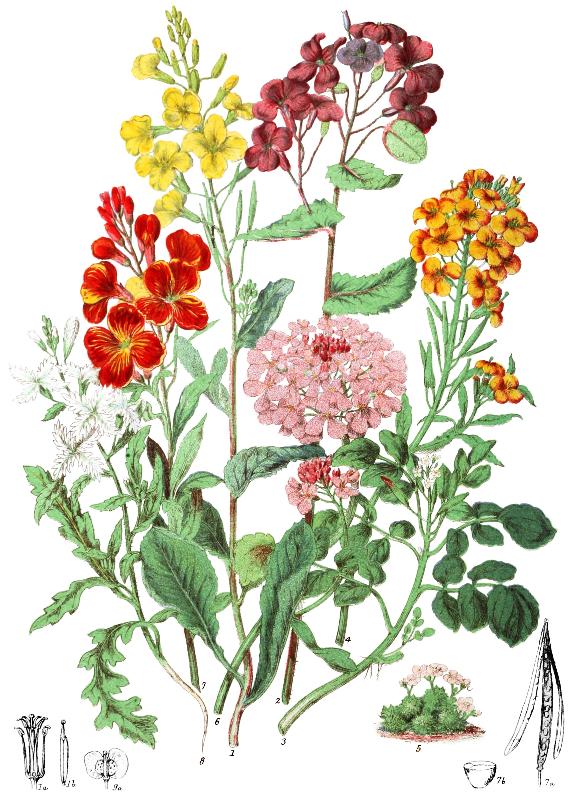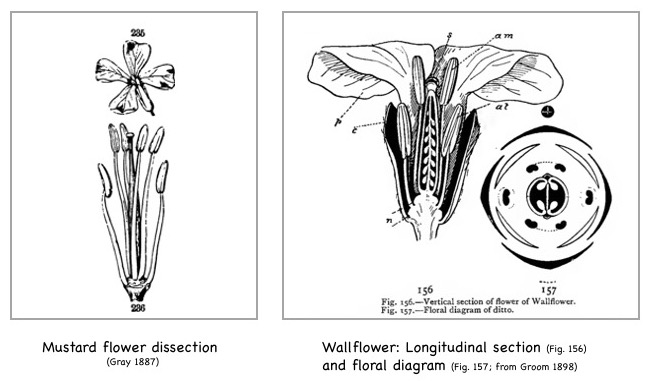The Brassicaceae
The Brassicaceae is the mustard family. This family used to be called the Cruciferae, due to the cross shape that is typically formed by its four petals
.Plants of the Brassicaceae have...
- 4 petals
- a superior ovary
- 6 stamens that usually consist of four long stamens and two shorter stamens
- a fruit that is a silique or silicle


In the images above, you can see all six stamens (four long, two short) in a dissected mustard flower (in this case, a flower from which perianth parts have been removed; Gray 1887). The image on the right shows both a longitudinal section of the flower (with two of the 4 long stamens) and a floral diagram showing placement of the stamens (Groom 1898). In the floral diagram, the black curved arcs represent sepals, the white or open curved arcs represent petals, and the small two-lobed black dots represent stamens. The cross-section of the ovary, with the central partition is also shown. When this ovary becomes a fruit, the seeds will remain attached to this thin, central partition, and the side walls of the fruit (the valves) will split away from this seed-bearing partition. (See the dehisced silique in the first illustration on this page.)
Short siliques are called silicles.
The species below produces silicles. This illustration shows many intact fruits, an enlargement of a fruit that has lost one of the fruit valves, and an enlargement of a fruit that has fully dehisced and lost both fruit valves (lower right corner).